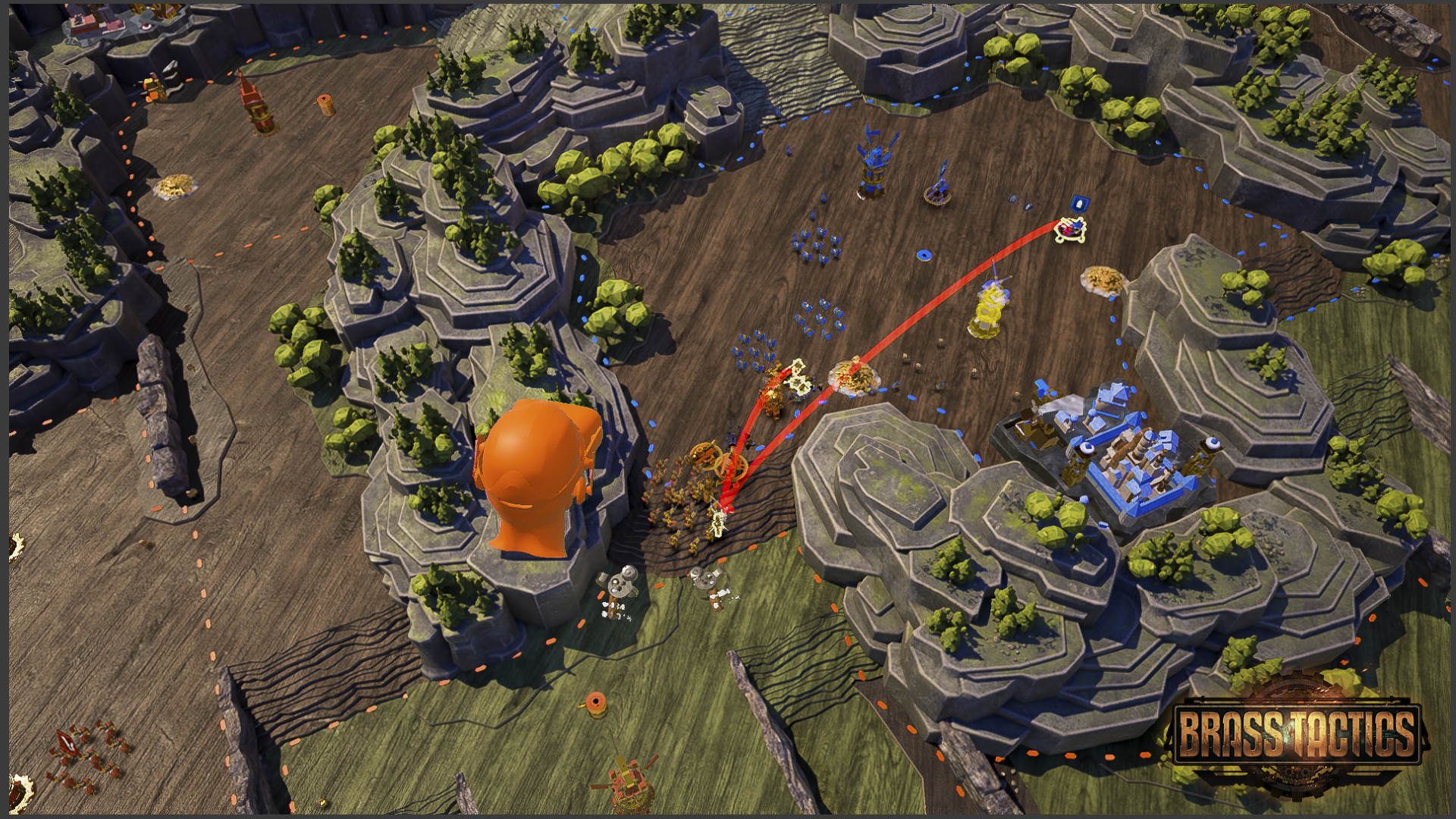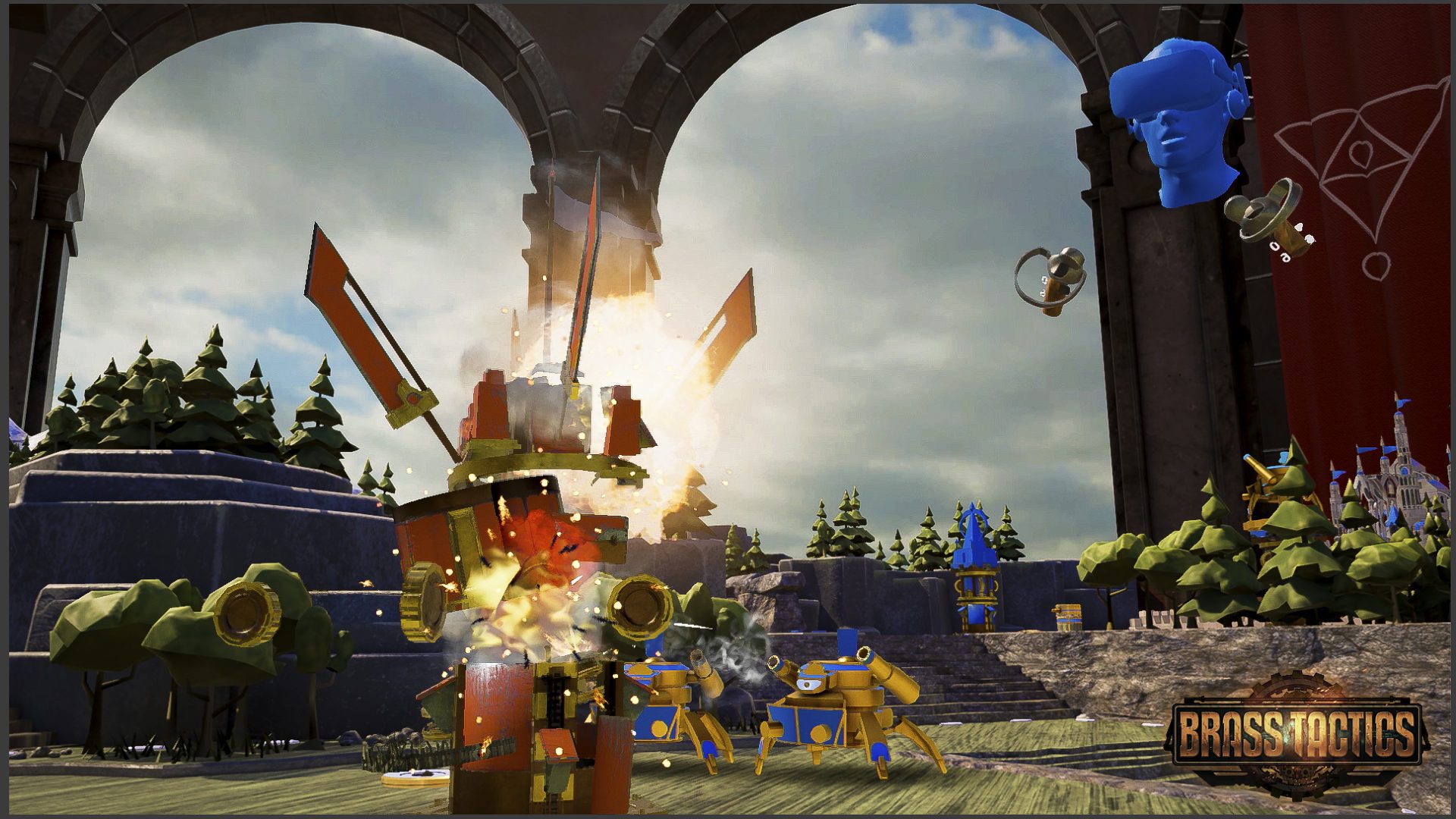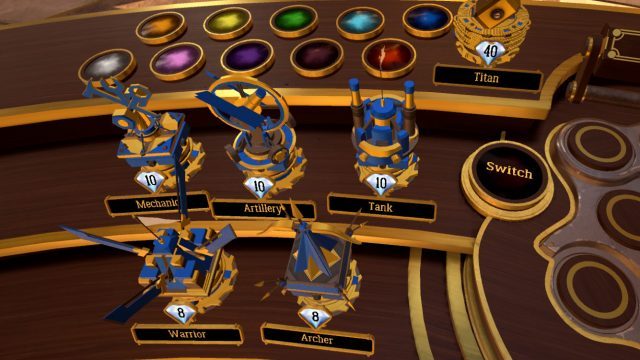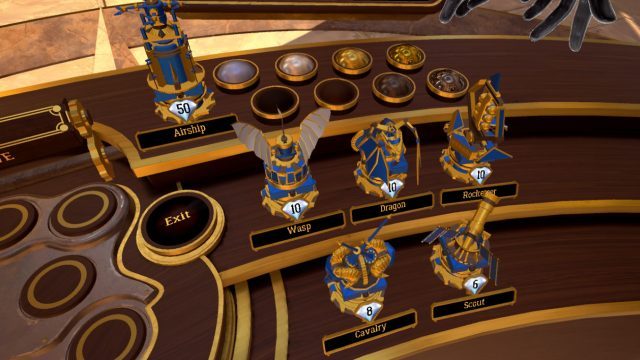Brass Tactics (2018) is a node-based real-time strategy game that comes with a bit of a pedigree. Created by Hidden Path Entertainment, the minds behind the Defense Grid franchise and Age of Empires II, you’ll probably enter the world of Brass Tactics like many others – dropping in after getting your fill of the free-to-play multiplayer demo Brass Tactics: Arena. What you see in Arena is basically what you get in the full version, save the game’s 20 maps, campaign mode, and 3 AI to play against.
Brass Tactics Details:
Developer: Hidden Path Entertainment
Available On: Oculus Rift (Oculus Store)
Reviewed On: Oculus Rift
Release Date: February 22nd, 2018
Gameplay
If you haven’t had a chance to download Brass Tactics: Arena for free, here’s the basic rundown:
Your tiny table-top army is essentially composed of a balanced selection of 12 unit classes, each with their own upgrade tracks that can render them with different abilities such flame add-ons, durability, and rush ability. Upgrades are only obtained during the match in question, so the only difference between a newcomer and an RTS monster is the player’s familiarity with the mechanics and maps. There’s a pretty cool variety of units, from weakling warriors to flying units like mechanical dragons. My favorite without question is the dual hammer-wielding Titans, who lurch towards targets and basically wreck the shit out of everything on land.
Like many RTSs, there are two fundamental currencies in the world, which in Brass Tactics’ case is jewels and ore. Jewels are obtained at special jewel mines scattered on both sides of the map, and are used to buy buildings, make upgrades and train some of the more destructive and expensive units. Ore, which is collected at ore mines, is instead used for training all units.

Because it’s node-based, you have to first conquer an area by placing a land unit in the predefined zone, which then gives you access to build on whatever nodes the area may hold – usually just one or two slots to build buildings. One or two additional slots are typically available for a turret in each node area.
Directing units is painfully simple. A full activation of Touch’s trigger gives you the ability to highlight any or all units by waving your hand over them. A half pull of the trigger will allow you direct individual unit clusters, something I found took getting used to, but some became very intuitive once I did.
Brass Tactics boasts 6 hours of story mode, and while your mileage may vary depending on your difficulty setting and your individual ability, I found this to be true on the ‘normal’ setting for me, clocking in just under 6 hours to complete the 8 missions. There is an easy, normal, hard and epic mode to choose from however, which could lengthen (or shorten) your campaign playtime.
In terms of the AI’s ability to present a challenge, the campaign mode was a fun way to basically learn about every unit in a logical sequence and see them in extended action, sort of like a long tutorial for the multiplayer portion. For this reason though, the campaign mode largely felt like a missed opportunity. Much of the story unfolds before you as dialogue between two AI right before the mission starts, offering only a tiny glimpse into the larger world around you. Because there wasn’t a world I could observe or influence outside the tabletops in front of me, the effect this had on me was obvious; the only thing I wanted to do was win the match ahead of me, and I didn’t really care why. This may seem like par for the course, but when you inhabit a space in VR, you expect a greater degree of agency than a flatscreen game.
While you can also bone up on your skills in skirmish mode, which gives you access to 3 different AI and more than 8 tables, I found the meat of the game was in online multiplayer. There, your opponents fill the gaps. During campaign, Brass Tactics proves itself to be a competent and well-balanced RTS, but multiplayer predictably dislodges you from whatever notions you had about creating a style during campaign and forces you to not only react, but in a way interact.
There is a slightly different social dynamic when you’re ostensibly in the room with someone else. Unlike top-down RTS variants, this VR RTS allows you to see what the other player is doing, see where they’re concentrated the most, and even sort of read their body language. To that end, I found that during online multiplayer, I didn’t actually like talking during the game. I was always too busy strategizing and balancing the spinning plates of creating and maintaining my war machine to really delve into any meaningful conversation. But afterwards was a different story. There, I would hang out for a few minutes before exiting and get to know my opponent some – see what they did, and have a little better understanding of how I could improve, or what sneaky thing I should learn next.
As far as I can tell, there’s no ranking system yet, which may hinder how newcomers perceive multiplayer mode farther down the road, but right now it’s one of the most engaging parts about Brass Tactics and can really be a blast if you get in with the right competitor.
Immersion
The world of Brass Tactics is visually stunning, and is probably some of the best character design in the VR RTS genre right now. It certainly doesn’t hurt having such detailed miniatures (those always look great). Seeing the little cogs churning, and your castle rise up Game of Thrones-style might just be worth the price of admission to some. Units and buildings are easily distinguishable too, which isn’t always the case in VR RTSs.

Because of the implied urgency of trying to win, you’ll probably get pretty engrossed in all of the duties of commanding your tiny armies across the game’s 10 square foot (3m²) table top. Without the game clock overhead, it would be really easy to lose time playing. This is possible due to BT’s responsive and fluid controls, and rock solid character interactions, which all help ground you in your new reality. Because of the relatively unusual locomotion style (see in the ‘Comfort’ section), I can’t say I was ever really ‘Present’, but I don’t see how it would be possible with this style of game anyway short of making me physically walk to the other side of the map; something I’m very glad I didn’t have to do.
Since the campaign is such a large part of the overall game, I should mention I was a little let down with the main villain Zavolto, a character voiced by Game of Thrones actor Aidan Gillen (Lord Petyr Baelish, aka ‘Little Finger’). To my surprise, I found his performance lacking the range I grew so accustomed to in GOT, feeling more like halfhearted sound bites than an actual interaction.
Here’s a quick clip of Zavolto admonishing me for quitting a battle.
The last niggle I have about the campaign mode is how the game feels when you finish a match. Instead of getting the option to continue on, or binge for the next ‘episode’ to experience more about why you’re fighting in the first place, you’re unceremoniously returned to the main menu where you then have to click through to the next stage you unlocked. It’s a bit symbolic of the entire story mode in general. “You win. Now leave.”
Comfort
Although you can play standing, this is definitely ideal for players looking for a seated experience.
Locomotion is accomplished in one way alone – by grabbing the map from under you and ostensibly flinging yourself in the desired direction. Personally, this proves to be extremely comfortable despite the relative speed that you glide along, something you can chalk up to the fact that you’re not actually flinging yourself, but rather moving the table from underneath you. To achieve this, you’re actually always central under the columned monopteros and its skybox while the table is repositioned below you.
That said, on the rare occasion I would end up focusing too much on the board, making my brain revert to the assumption that I was indeed flinging myself and not the table below me, which at moments led to some faint discomfort.









